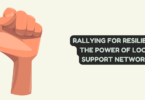
Step-by-Step Tutorial: Getting Started with Visual Regression Testing on LambdaTest
In the fast-changing world of web development, making sure that websites look great and work consistently is super important. Imagine visiting a site that suddenly looks messy or doesn’t work as it used to—that can be frustrating! It is where visual regression testing comes in, a convenient process that helps website makers and testing folks find and fix these visual hiccups and differences between different versions of a website.
So, in this article, we’re going to dive into why this type of testing matters, get to know LambdaTest—a cloud-based cross-browser testing platform, an impressive tool for doing these tests—and shine a light on all the cool things it can do.
Speaking of LambdaTest, it’s like a super-smart digital experience testing platform. It lets companies check out how their websites perform across more than 3000 different testing setups and actual device collections. You know, like trying out your site on lots of real gadgets and situations. It helps businesses ensure their websites are ready to handle all sorts of real-life situations, giving people a smooth and hassle-free browsing experience.
Visual Regression Testing: An Overview
Visual regression testing is like a spotlight on a stage, focusing keenly on spotting and flagging any sneaky visual alterations or differences between two web application versions. Its role is vital in keeping that smooth and attractive user experience intact. Now, while the more traditional functional testing does a solid job of making sure all the gears are turning right in the application, visual regression testing takes it up a notch. It peeks behind the curtains to examine the application’s layout, style, and visual bits and bobs.
One of the main things that set visual regression testing apart from old-school functional testing is what they’re actually testing. Functional testing is about giving the application a workout to see if all its features behave as they should. But visual regression testing? Its eyes are fixed on the outer layer—how things are presented. Think about checking for those pesky visual hiccups caused by changes in how the CSS behaves, issues with how the design adjusts to different screens, differences in how fonts appear, and more.
Keeping a consistent visual vibe going on in web applications is like keeping all the colors in a painting just right. But here’s the thing: different web browsers, operating systems, and devices can sometimes interpret web pages in their special ways, leading to variations in how things look. And because websites often get facelifts to their codebase, sometimes the new code can accidentally throw off how things appear—considering all the potential combos out there, manually sifting through for visual blips? It’s like searching for a needle in a haystack. This is where visual regression testing swoops in, taking over the job and helping teams zap those visual bugs before they make it to the eyes of the users.
Exploring LambdaTest: A Closer Look
LambdaTest stands out as a cloud-based cross-browser testing platform, offering a comprehensive solution tailored for visual regression testing. Its standout features position it as an indispensable tool in the arsenal of developers and QA professionals.
What sets LambdaTest apart is its extensive repertoire of real web browsers and operating systems, allowing users to test their web applications across diverse configurations thoroughly. By becoming a part of the LambdaTest community, users are granted access to a cloud-based testing environment, effectively eliminating the need for the intricate setup of numerous physical devices or virtual machines.
The beauty of LambdaTest lies in its effortless integration with widely-used testing frameworks such as Selenium and Cypress. With well-structured documentation and user-friendly APIs, the process of incorporating LambdaTest into existing workflows becomes a seamless endeavor—suitable for both novices and seasoned professionals alike.
The Importance of Visual Regression Testing
In today’s digital world, applications continuously evolve to meet the demands of customers. This evolution occurs across various browsers and their versions, making it essential to maintain both functionality and layout.
Furthermore, as most companies have embraced continuous integration processes, visual testing has taken on a pivotal role.
The user interface needs to shine on different devices, screen resolutions, web browsers, and operating systems. A minor UI glitch can lead to significant revenue losses. For instance, if a banking app has glitches, customers might avoid it due to security concerns. Even in less sensitive sectors, mere inconvenience can drive users away from an application.
It becomes much easier to spot visual discrepancies when the QA team conducts visual regression tests alongside developer tests early in the software development process. This approach not only conserves valuable resources but also allows businesses to allocate time to other scaling strategies. Ultimately, no matter how flawless an application’s functionality is, it’s ineffective if it fails to provide users with an exceptional interface and experience. Visual testing is an integral facet of quality assurance, whether focusing on UX or UI.
Another compelling reason for the significance of visual regression testing lies in the fact that meticulously designed visuals enhance a business’s credibility and brand image. Several domains greatly benefit from visual testing, including web and mobile applications and customer systems like banking, travel, airlines, and marketing websites.
Furthermore, businesses cannot afford to allow costly visual bugs to slip into production. While conventional functional testing validates data input and output, it doesn’t comprehensively address visual bugs. These bugs can evade detection even in extensively tested applications, highlighting the necessity of visual testing.
Exploring Various Approaches to Visual Regression Testing
When it comes to visual regression testing, it’s like capturing a snapshot of the user interface just before making a change and then comparing it to another snapshot—a skilled test engineer steps in to analyze any differences and take things forward.
Now, let’s dive into the different methods and steps involved in visual regression testing.
Visual tests play the role of taking, analyzing, and comparing screenshots to spot any pixel-level changes. It involves having a test runner and a framework in place. The test runner is about writing and executing tests, while the framework mimics user interactions as they navigate the application. It means replicating user actions and taking comprehensive snapshots to measure how the changes stack up against a standard reference. Once that reference is established, the QA team kicks in to run the test code.
As soon as the test run is complete, an automated report can be generated based on the visual regression testing tool you are using. In case any issues crop up, developers can make fixes and rerun the tests to gauge the success of those corrections. Depending on the needs, developers might also need to update specific baseline images, which then serve as a reference point for future visual tests.
Manual Visual Testing: A Human Touch
Just like the name implies, manual visual testing involves developers rolling up their sleeves and personally conducting visual regression tests without relying on automated tools. This hands-on approach entails meticulously examining pages and flagging any visual defects that may pop up with each new release.
This method proves quite advantageous during the initial phases of development, as it allows for exploratory or on-the-spot testing of the user interface. However, there’s a downside—relying solely on manual testing for an entire application can be a slow and labor-intensive process, not to mention susceptible to human error.
Layout Comparison
This technique centers on comparing the size and placement of user interface elements rather than scrutinizing individual pixels. If a size or positioning changes, the test will indicate a failure.
Pixel-by-Pixel Comparison
In this method, two screenshots are meticulously compared at a pixel level. Any deviations are flagged for the test engineer. While this approach can catch numerous issues, it may also detect minor discrepancies that have minimal impact on user experience.
Structural Comparison
This strategy delves into comparing the Document Object Model (DOM) structure to identify changes in HTML markup. Any such alterations result in a failed test.
Visual AI Comparison
This cutting-edge visual testing approach employs Machine Learning and Artificial Intelligence to compare two images. It’s convenient for dynamic web apps, eliminating the need for a baseline image. Think of it as computer vision mirroring human perception of the user interface. This approach excels at avoiding time-consuming false positives and is adept at detecting issues in specific regions with unexpected changes.
DOM-Based Comparison
This hybrid method combines layout comparison and structural analysis. It hinges on examining UI elements’ structural properties, such as sizes and positions, within the Document Object Model before and after changes. Any deviations are flagged, thereby highlighting alterations in the DOM code. But be cautious—test results can sometimes be inconsistent, so testers need to carefully review and interpret them to prevent any visual bugs from slipping through.
Crafting Tailored Visual Regression Tests
When you’re aiming for full-fledged control over visual validation, crafting dedicated visual regression tests is the route to take. This approach strikes a balance between maintaining a manageable test-writing workload and investing some time in starting from scratch.
Integrating Visual Checkpoints
An ingenious way to harness your existing functional tests is by introducing visual checkpoints. You’ve already got the tests in place to verify your application’s functionality. Now, all you need to do is insert visual checks amidst these functional tests to validate the appearance of pages. This technique capitalizes on your existing functional test code. However, keep in mind that it might restrict the scope of test coverage tools.
Implementing Implicit Visual Validation
Leveraging your current test framework is a crucial feature of this method. Implicit visual validation is seamlessly integrated into the existing framework by adding just a few lines of fresh code. This approach is particularly suited for carrying out general validation. However, it might not extend to validating specific framework components.
Implementing Visual Regression Testing: A Practical Approach
When it comes to putting visual regression testing into action, you can consider a few methods. Here’s a general roadmap to guide you through the process of implementing visual testing effectively.
Defining Relevant Test Scenarios
Kick things off by outlining what needs to be captured in the snapshots and when these snapshots should be taken during the testing phase. Since software operates within the context of user interactions, make sure to include these interactions in your testing scenarios.
Employ Smart Comparison
Leverage an automated visual testing approach to compare older snapshots with the most recent ones. The beauty of this is that you’ll receive a comprehensive report highlighting all the differences between various sets of screenshots.
Thorough Review
Enlist the expertise of a reviewer or a team of reviewers to meticulously examine how the changes are applied, ensuring they don’t disrupt the intended outcomes. They then compile their findings into a detailed report.
Making Corrections
If any bugs or discrepancies are spotted during the review, the immediate response should be to rectify them or notify the responsible developers for necessary actions. Don’t forget to update the recent snapshot as the new reference point for forthcoming visual tests.
In a nutshell, these steps offer a practical blueprint for seamlessly integrating visual regression testing into your testing workflow, all while ensuring accuracy and efficiency.
Exploring Visual Regression Testing with LambdaTest
LambdaTest has taken the lead in revolutionizing the landscape of visual testing by introducing one-click solutions that make locating visual UI regression issues a breeze. The platform offers an intelligent testing approach that facilitates meticulous image-to-image comparisons. It allows for the swift identification of visual deviations across various aspects such as text, layout, color, size, padding, and element positioning.
Through LambdaTest, you can seamlessly execute automated visual testing using Selenium and Cypress, supporting multiple programming languages, including Java, Node.js, and C#. It empowers you to deliver software applications that boast impeccable visual integrity. Additionally, the feature of parallel testing significantly reduces the time required for test execution. An added advantage is the effortless integration with your entire CI/CD technology stack, ensuring a seamless testing pipeline.
Among the array of offerings within LambdaTest’s Smart UI (or visual regression) testing cloud, you’ll find:
- Advanced customization options for visual testing, encompassing parameters like largeImageThreshold, errorType, ignore, and transparency.
- Harnessing the power of Webhooks for even more intelligent testing strategies.
- You can mitigate flakiness in the comparison output of your compressed screenshots by using LambdaTest’s various options, such as antialiasing, alpha, and colors.
In a nutshell, LambdaTest presents a comprehensive and advanced toolkit for efficient and accurate visual regression testing, making it a go-to solution for teams striving for impeccable user interfaces and seamless software applications.
Setting Up and Executing Your First Visual Regression Test with SmartUI and LambdaTest
Visual regression testing stands as a potent method to ensure the uniform appearance and user experience of web applications across diverse browsers, devices, and configurations. Thanks to LambdaTest’s SmartUI, executing visual regression tests is now even more accessible, streamlining the setup and implementation process. In this segment, we’ll lead you through the steps to establish your inaugural visual regression test using SmartUI and LambdaTest.
Prerequisites:
Before embarking on this journey, ensure you have a fundamental grasp of Selenium and WebDriver. Moreover, it’s essential to hold a LambdaTest account to access the functionalities of SmartUI.
Step 1: Logging into LambdaTest SmartUI
- Log in with your credentials at LambdaTest (https://www.lambdatest.com/).
- Visit hub.lambdatest.com/wd/hub to access your Selenium remote connection hub.
- From the LambdaTest dashboard, select the Access Key button and copy your LambdaTest username (LT_USERNAME) and access key (LT_ACCESS_KEY).
For MacOS/Linux Users:
You can configure the requisite environment variables using the following commands:
———————————————————-
export LT_USERNAME=”YOUR_USERNAME”
export LT_ACCESS_KEY=”YOUR_ACCESS_KEY”
———————————————————-
For Windows Users:
You can establish the required environment variables via the following commands:
———————————————————-
set LT_USERNAME=”YOUR_USERNAME”
set LT_ACCESS_KEY=”YOUR_ACCESS_KEY”
Step 2: Establishing Your SmartUI Project
- Start off by heading to the Projects section within LambdaTest.
- Give a click to the “New Project” button to initiate the creation process.
- Opt for “Web” as your chosen platform for executing your Selenium tests.
- Introduce a fitting name for your project, designate the approvers for identified changes, and assign tags for streamlined filtering or effortless navigation.
- Seal the deal by clicking the “Submit” button, officially bringing your SmartUI project to life.
Step 3: Configuring Your Test with Selenium-Desired Capabilities
With your SmartUI project in place, it’s time to get those screenshots rolling by executing automation scripts. Here’s how you can configure your test using Selenium Desired Capabilities:
- Start by cloning the sample GitHub repository tailored for SmartUI with Node.js (https://github.com/LambdaTest/smartui-node-sample).
- Get your LambdaTest credentials sorted out by following the instructions laid out in the README.md file of the repository.
- Tailor the required capabilities to match your test suite. Replace the placeholders below with your preferred values:
- platform: Configure the operating system for your Selenium test.
- browserName: Set up your browser of choice for the Selenium test.
- version: Define the version of your chosen browser for the Selenium test.
- visual: Flip this to true to activate the screenshot capture for the Selenium test.
- name: Assign a name to your Selenium test.
- build: Give a name to the build for your Selenium test.
- smartUI.project: Replace <Your Project Name> with the name of the project you created in Step 2.
- smartUI.build: Replace <Your Build Name> with the designated build name.
- smartUI.baseline: Switch this to false if you wish to disable updating to a new baseline build.
Here’s a practical illustration of how your capabilities configuration could look:
let capabilities = {
platform: “Windows 10”, // Define your OS for the Selenium test
browserName: “chrome”, // Indicate your Browser for the Selenium test
version: “latest”, // Specify your Browser Version for the Selenium test
visual: true, // Activate screenshot capture for the Selenium test
name: “test session”, // Name of the test for Selenium
build: “Automation Build”, // Name of the build for Selenium
“smartUI.project”: “<Your Project Name>”, // Insert your new project name here
“smartUI.build”: “<Your Build Name>”, // Replace with the new Build name
“smartUI.baseline”: false, // Switch on if you want to update to a new baseline build
};
Step 4: Snapping Screenshots
With your test primed and connected to the LambdaTest Selenium Cloud Grid through SmartUI, you’re all set to embark on screenshot capturing for visual regression testing.
For snagging a comprehensive, full-page screenshot, incorporate the following webhook into your test cases at the specific points where you wish to capture your application’s screenshot:
driver.executeScript(“smartui.takeFullPageScreenshot=<Your Screenshot Name>”);
In order to take a regular screenshot of a specific segment of your application, add the following webhook below the segment of the Selenium script where the screenshot should be taken:
driver.executeScript(`smartui.takeScreenshot,{“screenshotName”:”<Name of your screenshot>”}`);
Step 5: Running the Test
Before you set your test in motion, ensure to install the necessary dependencies by executing the following command within your terminal:
npm i
With dependencies in place, you’re ready to roll with test execution. Initiate the test using the following command:
node test.js
Step 6: Reviewing Test Results
Following the test execution, it’s time to peek at the executed builds within the realm of LambdaTest SmartUI. Here, a plethora of features await your exploration, allowing you to execute additional builds as needed.
To retrieve the status of the captured screenshot and delve into the results, consider employing the subsequent webhook:
driver.executeScript(“smartui.fetchScreenshotStatus”);
This webhook will furnish you with a wealth of information, including the screenshot’s status, name, URL, mismatch percentage, threshold, browser employed, resolution, build ID, build name, and project name.
By adhering to these steps, you’re poised to seamlessly run and assess your visual regression test, harnessing the power of SmartUI and LambdaTest to ensure your web applications maintain their visual integrity across various scenarios.
Integrating LambdaTest with Your CI/CD Pipeline: Ensuring Visual Integrity
Infusing visual regression testing seamlessly into the CI/CD workflow emerges as a pivotal step to safeguard against visual glitches impacting the production environment. The continuous integration and continuous deployment (CI/CD) pipeline allows teams to initiate tests whenever code alterations are committed automatically. Here’s your guide to seamlessly integrating LambdaTest into your CI/CD pipeline:
Significance of Visual Regression Testing within CI/CD:
- CI/CD accelerates development and deployment yet concurrently heightens the potential for introducing visual discrepancies.
- By weaving visual regression tests into the pipeline, teams can pinpoint visual anomalies early on, thwarting their journey to the production realm.
Integration Process with Prominent CI/CD Tools:
- LambdaTest extends seamless integrations with well-regarded CI/CD tools such as Jenkins, GitLab CI, CircleCI, and more.
- The integration journey encompasses configuring test settings, specifying test suites, and outlining the browsers and devices earmarked for testing.
- This integration empowers teams to trigger visual regression tests each time novel code is automatically committed.
Automating the Visual Regression Testing Paradigm:
- Automation emerges as the linchpin for perpetually monitoring visual shifts within a dynamic web application.
- LambdaTest equips users with APIs and command-line utilities, enabling the execution of tests programmatically and their assimilation into automated build procedures.
- Through the automation of visual regression tests, teams establish a resilient feedback loop, facilitating swift identification, resolution, and retesting of issues.
Addressing Common Hurdles in Visual Regression Testing
Visual regression testing may encounter its fair share of challenges, like any testing endeavor. Navigating these standard stumbling blocks is instrumental in upholding the precision and efficacy of visual regression tests. Here, we offer troubleshooting insights and solutions to overcome these issues:
Dealing with False Positives/Negatives:
- At times, harmless discrepancies can be mistaken as issues, leading to false positives.
- Conversely, actual problems might go unnoticed due to minor variations, causing false negatives.
- You can curtail both false positives and negatives by fine-tuning the tolerance level and honing test scripts.
Managing Dynamic Content:
- Websites housing dynamic content might exhibit visual differences, even when functionality remains intact.
- Tackle this by employing dynamic element locators and exclusion rules, thereby excluding dynamic content from the comparison process.
Navigating Sluggish Test Execution:
- Running tests across various browsers and devices can elongate test execution durations.
- Optimize test suites, embrace parallel testing, and harness LambdaTest’s streamlined test infrastructure to enhance execution speed.
Expanding Test Coverage Horizons:
- Relying on a confined set of browsers and devices can result in crucial visual issues being overlooked.
- Utilize LambdaTest’s extensive browser and device coverage to broaden your test scope, ensuring compatibility across a wider audience.
By adhering to these solutions, you can effectively surmount the common challenges inherent in visual regression testing, bolstering your quest for flawless web application appearances and user experiences.
Wrapping-Up
In conclusion, incorporating visual regression testing into your web development workflow can significantly enhance the quality and consistency of your web applications. With the help of tools like LambdaTest, you can proactively identify and address any unintended visual changes that might occur as a result of code modifications. By following the step-by-step tutorial outlined in this blog, you’ve gained valuable insights into how to get started with visual regression testing on the LambdaTest platform.
Visual regression testing goes beyond traditional functional testing by focusing on the visual aspects of your application. It ensures user interfaces remain consistent and visually appealing across browsers, resolutions, and devices. It not only helps in delivering a seamless user experience but also reduces the risk of introducing visual discrepancies that could impact user trust and satisfaction.
You can easily detect subtle visual differences by setting up a baseline of screenshots before making code changes and then comparing them with post-change screenshots. The detailed comparison reports provided by LambdaTest assist in pinpointing these discrepancies, making it easier for developers and QA teams to collaborate in resolving issues efficiently.
Remember, visual regression testing aims not just to catch defects but also to prevent them. By incorporating this practice into your development cycle, you can catch visual issues early on, reducing the time and effort required for bug fixes in later stages of development.
As you continue your journey in web development, consider visual regression testing as a valuable ally in your pursuit of delivering high-quality, visually consistent web applications to your users. By following best practices, staying updated on design trends, and leveraging powerful tools like LambdaTest, you can ensure that your web projects maintain their visual integrity and provide an exceptional user experience over time.






